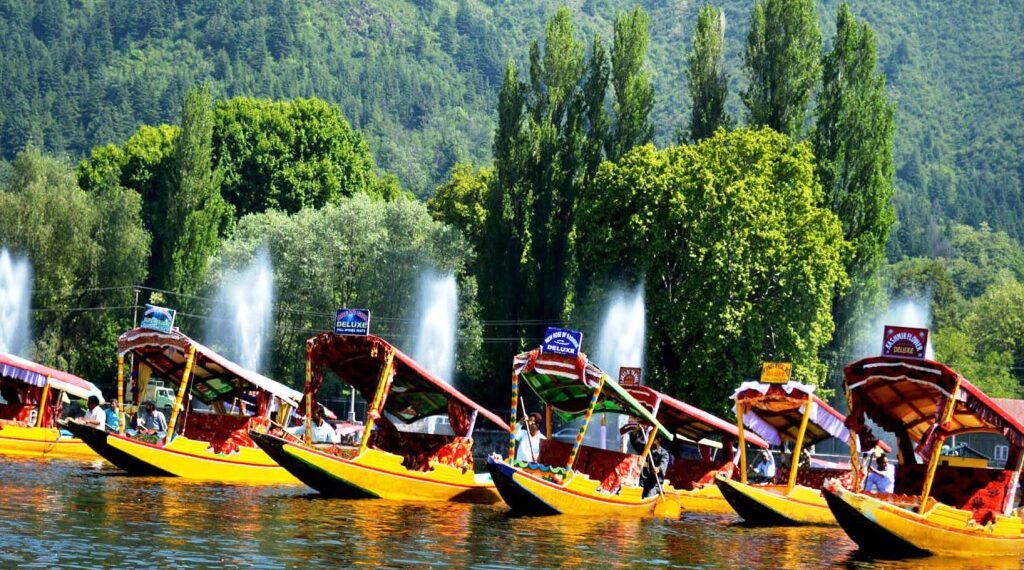For generations, Kashmir has been celebrated as nature’s own masterpiece, a land of snow-capped mountains, crystal-clear rivers and summers so gentle they seemed to be woven from poetry. The breeze once carried the fragrance of apple orchards, rivers flowed with icy freshness from the glaciers and the sun, though warm, was always kind. But in recent times, a strange and pressing heat has begun to settle over the valley. What was once unimaginable in this Himalayan cradle has now become a recurring reality with rising summer temperatures unsettling the balance of life and nature. Heat waves were never part of Kashmir’s weather vocabulary. Summers here were once mild and refreshing with temperatures rarely crossing 28 degrees. Today, the mercury touches 33 to 35 degrees, a figure that may appear ordinary to people in the plains but is a jarring shift for those accustomed to Kashmir’s cool climate. The change is not only in numbers but also in experience. Walking through Srinagar at noon, one feels the difference, the waters of Dal Lake shimmer more harshly under the sun, Chinar leaves droop before their time and streams that once danced with glacier-fed waters now slow to a weary trickle. This shift disrupts a delicate cycle where winter snowfall sustains rivers, spring thaws feed farms and orchards and summers nurture crops. Excessive heat cracks this rhythm, pushing glaciers to retreat faster, altering river flows and straining an already fragile ecosystem.
The human impact is equally visible. Houses in Kashmir are built to shield people from bitter winters, but in extreme heat, they trap suffocating warmth, leaving residents struggling for relief. Agriculture, the lifeline of thousands of families, is under strain as saffron, apples and cherries suffer in prolonged heat. The elderly, children and those with fragile health are the first to bear the brunt. Hospitals are quietly recording more cases of dehydration; skin conditions and exhaustion linked to the rising temperatures. Tourism, too, is affected. Visitors come expecting cool breezes and gentle sunlight, only to find themselves confined indoors, blinds drawn against the sun. This shift is more than an inconvenience; it is an economic and cultural challenge to a region that thrives on both farming and tourism. Scientists trace the change to the larger crisis of climate change. Rising global temperatures, deforestation and rapid urban growth have all played their part in altering Kashmir’s climate. Glaciers such as Kolahoi continue to shrink year after year, snowfall is becoming lighter and erratic and rainfall no longer follows a predictable rhythm. Farmers struggle as apples ripen too early and lose sweetness, walnuts harden unevenly and saffron flowers wither before blooming fully. Water, once abundant, is increasingly uncertain. Intense snowmelt brings sudden floods, but soon after, the land is left parched. This pattern places farmers in a constant state of anxiety, torn between flood and drought, both of which threaten their livelihoods.
The road ahead requires urgent and committed action. Afforestation drives, wetland restoration and climate-sensitive urban planning are no longer optional but necessary steps. Trees and wetlands are natural guardians that cool the land and regulate water flow and their protection must be prioritized. Agriculture must adapt through heat-tolerant crop varieties, modern irrigation methods and early warning systems that help farmers prepare for extreme conditions. Public awareness can also make a difference, ensuring people know how to protect themselves from rising heat. Yet these steps, though vital, only treat the symptoms. The deeper solution lies in addressing the roots of climate change through collective efforts to reduce carbon emissions and slow global warming. Kashmir’s unique climate is not just a gift for its people but a treasure for the world, and its preservation demands both local and global resolve. To see Kashmir’s gentle summers harden into harsh heat is to witness more than just a change in season, it is a loss of beauty, heritage and balance. The Chinar trees, the glacial streams, the orchards heavy with fruit are not mere symbols but the very essence of life in the valley. The growing heat is a warning, not a passing discomfort and if ignored, it could redefine centuries of harmony within just a few decades. The time to act is not in the future but now, before rivers run dry and orchards lose their bloom. Kashmir’s soul, its cool breath, green heart and snow-crowned dignity, depends on whether we meet this challenge with hesitation or with the urgency it demands.


